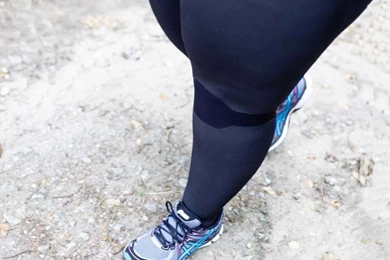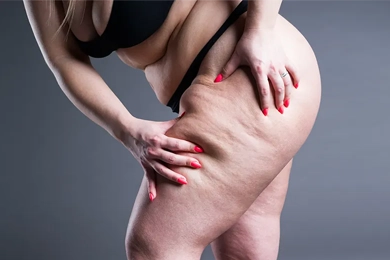
The most typical body parts affected by lipedema are the legs, hips, and buttocks. Lipedema is a chronic, progressive condition characterized by the abnormal accumulation of fat in certain body regions. Exercise, manual lymphatic drainage, and compression therapy can all help manage the symptoms, but they frequently don't have a lasting impact.
VaserLipo, also known as Vaser-assisted liposuction or ultrasonic-assisted liposuction, has recently come into the spotlight as a promising treatment option for people with lipedema, providing more long-lasting solutions and an enhanced quality of life.
VaserLipo is a sophisticated liposuction method that selectively breaks down and emulsifies fat cells using ultrasound technology, making them easier to remove from the body. In comparison to conventional liposuction, the procedure is less invasive, causing less harm to the surrounding tissues, less blood loss, and faster recovery times. VaserLipo is especially well-suited for treating lipedema because it can focus on the fibrotic, abnormal fat deposits linked to the condition while maintaining the health of the lymphatic system and other nearby structures.
The following steps are typically included in the VaserLipo procedure for the treatment of lipedema:
Consultation and preparation: Patients will have a thorough consultation with a qualified surgeon with experience treating lipedema before having VaserLipo. The surgeon will evaluate the patient's medical history, look over the troubled areas, and decide whether VaserLipo is a good fit for the patient's particular needs.
Anesthesia: Depending on the scope of the procedure and the patient's preferences, VaserLipo is typically carried out under local or general anesthesia.
Infusion of tumescent fluid: Saline, lidocaine, and epinephrine are combined to create a tumescent fluid that is injected into the treatment area to numb the area, constrict blood vessels, and make fat removal easier.
Vaser probe insertion: A specialized Vaser probe that emits ultrasonic waves is inserted by the surgeon after making a few small incisions in the treatment area. When fat cells are targeted for destruction by ultrasonic energy, nearby structures like blood vessels, nerves, and lymphatic vessels are largely unaffected.
Fat removal: To remove the desired fat deposits, the emulsified fat is then aspirated using a cannula that is gently moved back and forth.
Closure and compression: Following the removal of the required amount of fat, the incisions are stitched up and a compression garment is put on to support the treated areas as they heal.
VaserLipo, also known as Vaser-assisted liposuction, is a sophisticated, minimally invasive liposuction technique that has demonstrated success in treating lipedema, a chronic and progressive condition marked by abnormal fat accumulation in particular body regions. This comprehensive guide will offer thorough details about the healing procedure and the outcomes patients can anticipate following
Post-operative Care and Recovery
VaserLipo recovery times vary depending on the extent of the procedure, the areas treated, and the patient's ability to heal on an individual basis. The following are some significant elements of the postoperative care and recovery process:
Expected Results
For people with lipedema, VaserLipo can produce noticeable improvements in the shape and contour of the treated areas. The following are some significant results that patients can anticipate:
Reduced pain and discomfort: VaserLipo can successfully reduce pain and discomfort by removing the abnormal fat deposits linked to lipedema, which enhances the quality of life for patients.
Improved mobility and function: Greater range of motion and increased mobility in the affected limbs may follow the removal of extra fat, allowing patients to engage in daily activities and exercise more comfortably.
Enhanced body contour: By focusing on and removing the disproportionate fat accumulation associated with lipedema, VaserLipo can result in a more proportionate and aesthetically pleasing body shape.
Long-lasting effects: VaserLipo can produce long-lasting effects by removing abnormal fat deposits, even though lipedema is a chronic condition for which there is no known cure. The outcomes of VaserLipo treatment can be preserved by leading a healthy lifestyle, wearing compression clothing as advised, and exercising frequently.
Although VaserLipo has shown promising results in the treatment of lipedema, it is important to be aware of any risks and side effects that could arise.
 Lipedema Socks
Lipedema SocksUsing customized compression clothing, sometimes referred to as lipedema socks, is one of the supportive treatments for treating the symptoms of lipedema. Read More...
 Lipedema Treatment with VASERLipo (Vaser Liposuction)
Lipedema Treatment with VASERLipo (Vaser Liposuction)A chronic illness called lipedema, which mainly affects women, is characterized by an abnormal build-up of fat, generally in the arms but also in the legs. Read More...
 Unveiling Lipedema: Treatment, and the Benefits of Vaserlipo
Unveiling Lipedema: Treatment, and the Benefits of VaserlipoLipedema is a common illness that often goes undetected or is misunderstood. It is a chronic condition characterized by aberrant fat cell buildup in the legs and, in some cases, the arms. Read More...
 Lipedema Diet
Lipedema DietLipedema is a persistent medical condition that predominantly impacts women and manifests as an abnormal accumulation of fat in particular body regions, including the legs and occasionally the limbs. Read More...